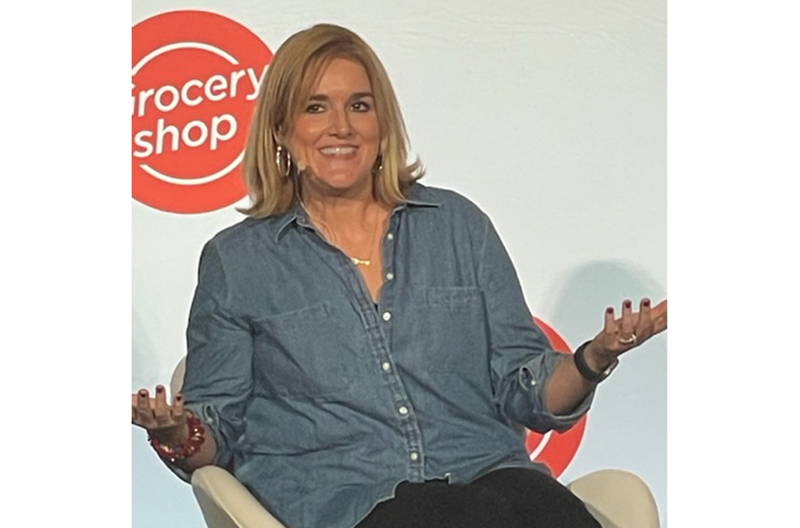Marissa Jarratt, CMO for 7-Eleven, recently spoke at GroceryShop about how the convenience store giant is working to keep its nearly 100-year-old brand relevant.
Founded in 1927, 7-Eleven invented to-go coffee in Long Island, New York, Jarratt said. “Even today, we continue to innovate.”
Today’s innovation is more from a digital perspective, she added, as convenience is much more digitally enabled. The company’s vision is to be “the first choice for convenience anytime, anywhere.”
While digital is a focus, Jarratt said 7-Eleven also has a huge store footprint, with more than 13,000 locations in the U.S. “For us, providing convenience is as much about the digital experience as it is leveraging our physical store footprint.”
Jarratt joined 7-Eleven in 2019, with the mission to contemporize the brand. “I got to work by first helping to define our brand purpose, which we describe as ‘activate awesome.’ And so it served as a foundation for our marketing strategy and our operational strategy since then,” she said.
7-Eleven tries to “activate awesome” in ways that meet today’s customers’ definition of convenience. First is offering a frictionless experience through its delivery platform, mobile checkout, cashierless stores and digital wallet.
Second, as the economy has become more volatile and uncertain, Jarratt said 7-Eleven customers are looking for value. The company offers a combination of “the absolute right, highest quality assortment” in its stores at the best possible value.
The third way is through personalization, leveraging its loyalty program. With more than 80 million members, it delivers value through personalized experiences, according to Jarratt.
She went on to note that 7-Eleven is targeting Gen Z and younger Millenials who know the company but may perceive it as nostalgic. The challenge is to demonstrate that “7-Eleven is a modern brand with solutions ready to serve their needs.”
To do so, the first step is to understand them. Among other research avenues, 7-Eleven has launched a proprietary panel – the Brainfreeze Collective, named for its Slurpee product. With more than 150,000 members, 7-Eleven is asking about their “wants, needs, desires, dreams, beliefs, perspectives, opinions” about the company, culture and unmet needs, Jarratt said.
The company also uses social listening, through platforms such as Instagram, to gain insights. She said the question then becomes how to “activate against it.”
“We’ve made triple-digit percentage increases in paid digital video investment in the last couple of years,” Jarratt said.
Another area is brand partnership, such as working with streetwear fashion designers and three-way collaborations with its manufacturing and vendor partners.
Jarratt shared the story of Froggy, a punk rock girl band from Pennsylvania, that posted a love song, “Ode to 7-Eleven Nachos.” The band tagged 7-Eleven in the social media post, asking if the company wanted to make a video. She said the post “serendipitously” coincided with a quality product improvement 7-Eleven was making with its nacho cheese.
The company ended up underwriting and producing the video. Not only did that help launch the band but it also drove a 15 percent increase in the sales of 7-Eleven nachos with the new cheese, Jarratt said.
“We’re constantly looking for ideas that are a true reflection of our customers’ fandom, their interests and how that ties into the 7-Eleven brand personality and then how we bring that to life in a way that’s authentic,” she said. “It’s been very promising.
“Thus far, we’ve seen an increase in trips to our stores…sales are up, our engagement across digital platforms is up, our social media presence has grown quite strongly.”
Looking forward, Jarratt said 7-Eleven will continue to focus on personalization; monetizing data as an asset – launching its Gulp Media Network; and building on fandom and cultural relevance.
“I think the Metaverse is where we’re going. That is going to be a way that we scale our experiences for people, for customers beyond the store.”

